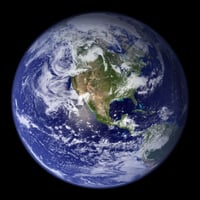Atmospheric manipulation (also known as “solar radiation management” or SRM) involves reflecting...
"Super" Microbes That Eat Plastic: A Possible Solution for Dealing with Our Massive Problem of Plastic Waste
Recent research published by several different scientific teams suggests that there is hope for dealing with our problem of plastic waste. More than 300 million tons of plastic waste is generated each year and the issue of "micro-plastics" permeating the oceans is a growing concern.
Several microbes have been identified that can break down plastics, but one of the most promising is Ideonella sakaiensis. This microbe breaks down polyethylene terephthalate (PET) which is used in plastic bottles and other containers to hold drinks like water or soda.
Scientists first discovered this microbe several years ago, and have since identified several other strains of microbes that eat plastics and one team even combined two separate microbe strands to create a "super" strain that breaks plastics down faster than any other known bacterium. It was able to accomplish in a couple of days what would take hundreds of years in nature.
The idea is to search for naturally occurring microbes, such as bacteria, that have already developed the characteristics necessary to break down plastics and then to modify these microbes in ways that allow the process to be industrialized in a factory at scale.
Microbes are all around us. They are found on nearly every surface, and even inside of our bodies. Microbes are naturally occurring organisms that can only be seen under a microscope, and scientists estimate as many as a trillion microbe strains remain to be identified on Earth.
Microbes flourish in nearly every environment on earth and through evolutionary processes develop unique characteristics. Some microbes identified break down plastics, which opens the question, how many other types of microbes already exist in nature that can help with the environmental fight against plastics?
Microbes can survive and evolve in extremely harsh conditions. For example, microbes that live at the bottom of the ocean without sunlight do not need any food source other than what they find within their environment. The discovery of microbial life in Lake Vostok more than 13,000 feet below the Antarctic ice is another example of the diversity in microbes. Lake Vostok was sealed beneath the ice 15 million to 20 million years ago, and life still flourishes there.
Using Microbes to dispose of plastic could potentially accomplish the task without creating other types of pollutants such as when plastics are burned releasing chemicals into the air as well as releasing large amounts of heat. However, in order to scale the use of microbes to recycle or break down plastics, would require an engineered process and the concern is that microbes could create a whole new set of challenges.
For example, microbes are living organisms themselves. If released into the environment, they may grow out of control or even become invasive species in other areas where they weren't meant to exist. This has been seen before in other situations where scientists attempted to engineer the environment using bio-organisms. The law of unintended consequences is real, and it is very difficult to predict what direction an organism will evolve.
Think the first Jurassic Park movie. Scientists made a breakthrough that allowed them to resurrect long-extinct species by cloning them from DNA harvested from mosquitoes that were trapped in amber. They introduced a security protocol known as the "lysine contingency (LC). Through the Lysine Contingency, scientists introduced a faulty gene into their subjects so that they required a dietary supplement of the protein Lysine. If they did not receive it, they would theoretically fall into a coma and die.
The problem is, there is no Lysine Protocol for microbes. The research into how to grow microbes at scale in an environment that will allow for the disposal of thousands of tons of plastic is far in the future. Not to mention the safety protocols that would need to be developed at the same time.
In addition, microbes are not the only option when it comes to breaking down plastics. There is also a process called pyrolysis that breaks plastic materials into hydrocarbons and other byproducts which can then be used in industry.
Pyrolysis has been around since World War II with commercial applications being developed in many places around the world. Further research into pyrolysis could potentially develop into safe processes that not only help reduce plastic waste but do it safely without introducing difficult to control living organisms into the mix.
The idea of using microbes to reduce plastic waste is intriguing, but it does come with risks. There are alternative technologies for reducing the use of plastics that are currently in development and years away from commercialization. Until then, we'll have to wait until more research has been done on how these microbes will impact ecosystems before making any permanent changes. For now, it's best not to rely solely on this solution when trying to combat our growing problem with plastics pollution worldwide.



